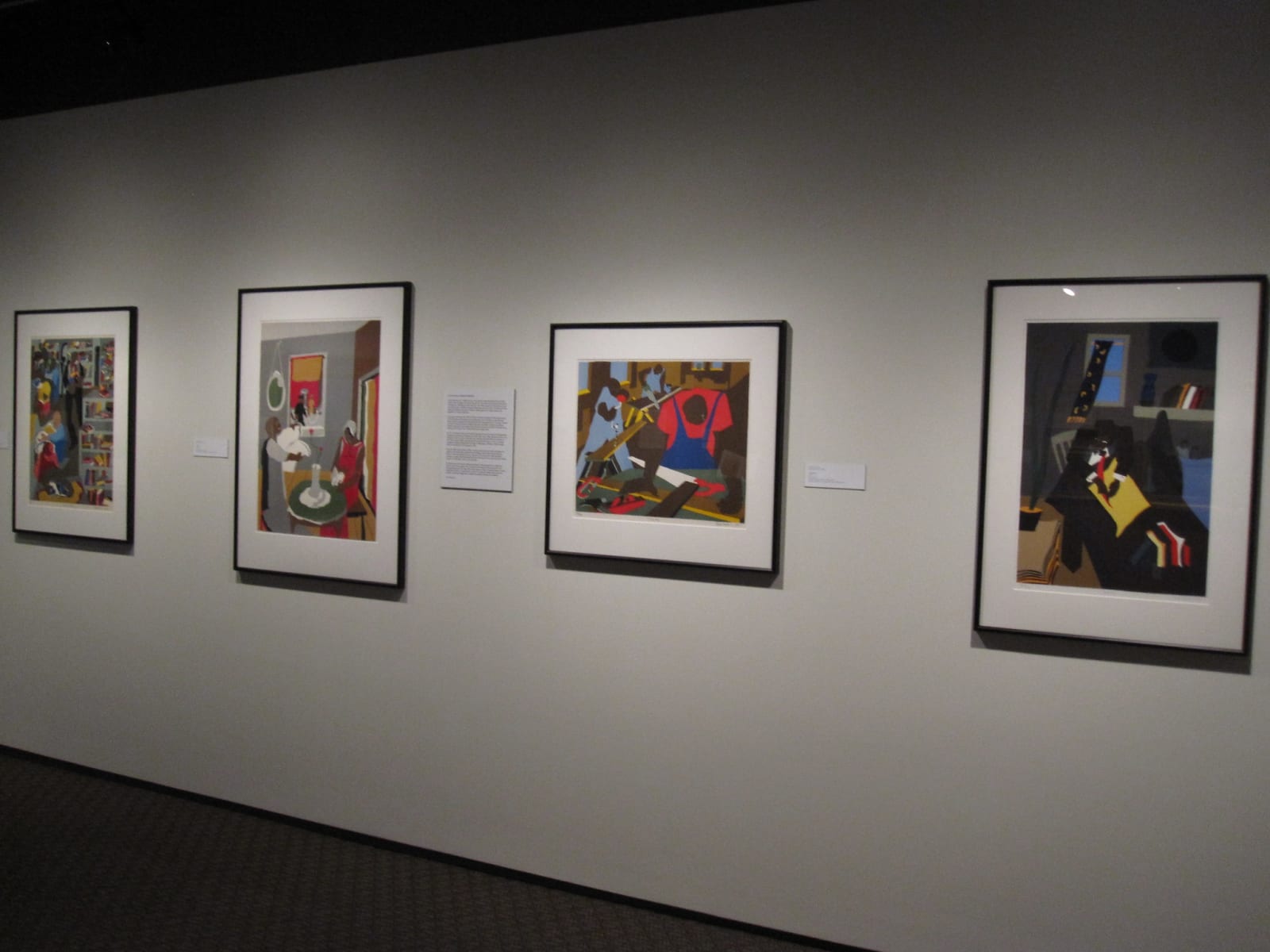Jacob Lawrence was one of the most unique and masterful American artists of the twentieth century. He was born in Atlantic City, New Jersey in 1917, and moved with his mother and siblings to Harlem in 1930, where he studied art at Utopia Children’s House, a program designed to meet the needs of families in the city. He drew inspiration from the buildings and crowded streets and subways in Harlem. Lawrence carefully researched the history upon which he based his works at the 135th Street branch of the New York Public Library.
The Migration Series
His Migration Series documented the Great Migration of more than one million African Americans from the rural South to the industrial North following the outbreak of World War l. The 60-panel series was exhibited at the Museum of Modern Art in 1941, when Lawrence was just 23, and became the first work of a black artist acquired by MoMA. Half the panels remain in the MoMA collection, the other half in the Phillips Collection.
The Struggle Series on Tour
Beginning in 1949, Jacob Lawrence spent five years researching what he wrote were the, “struggles, contributions, and ingenuity of the American people.” He spent the next several years creating the series Struggle: From the History of the American People, consisting of thirty panels representing historical moments in American history from 1775 through 1817—from Patrick Henry to Westward Expansion.
Twenty-three of the surviving panels have are currently on display at the Peabody Essex Museum in Salem, Massachusetts. will go on to the Met Fifth Avenue from June 2 to September 7, 2020 and then continue on a national tour to the Birmingham Museum of Art, the Seattle Art Museum, and the Phillips Collection in Washington, D.C.
The Legacy of Jacob Lawrence
Jacob Lawrence served in the Coast Guard from 1943 to 1945. His first assignment was in the South, where he experienced racism and was then sent to the USS Sea Cloud, the Navy’s first integrated ship.
In 1946, Lawrence became the first African-American instructor at the famed experimental Black Mountain College in Asheville, North Carolina. He and his wife were invited by Josef Albers, who had migrated to the United States to escape Nazi persecution in Germany. Albers arranged a private train car for the couple, to save them the humiliation of having to move to a segregated train car after they crossed the Mason-Dixon line.
Lawrence admitted himself into a hospital in Queens, stressed and exhausted in 1949. He spent a year in treatment and began his Struggle series after his discharge.
In 1956, Lawrence was selected to represent the United States at the 1956 Venice Biennale and offered a teaching position at Pratt Institute, where he remained for nearly fifteen years. The first major retrospective of his work opened at the Brooklyn Museum of Art in 1960 and traveled to sixteen American cities.
The University of Washington offered Lawrence a professorship in 1970, which he accepted in 1971 and taught there until his retirement in 1983. In 1990, Jacob Lawrence received the National Medal of Arts from President George W. Bush. Lawrence died in his home in Seattle in 2000.
The Work of Jacob Lawrence at Surovek Gallery
Please contact us if you would like more information about the work of Jacob Lawrence, or any of the other fine art work, available at Surovek Gallery.
References:
Nancy Kenney. Jacob Lawrence’s epic series depicting America’s early struggles sets off on US tour. The Art Newspaper. January 17, 2020.
Natalie Gale. PEM Reunites Jacob Lawrence Painting Series. Northshore Magazine. January 17, 2020.
Sebastian Smee. These ‘missing’ Jacob Lawrence paintings are finally in a museum — and they’re masterpieces. The Washington Post. January 24, 2020.



